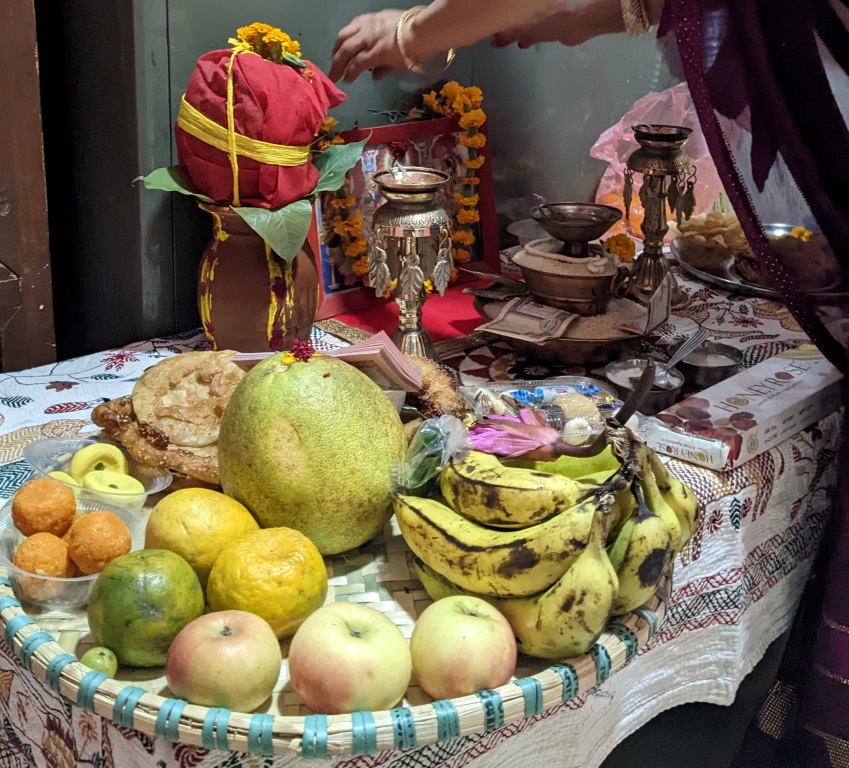Prasadam, also known as Prasada or Prasad, typically evokes the image of a food offering received in a temple or after a home puja among Indians. However, Prasad is more than just a post-puja or temple visit treat; it’s initially an offering made to a deity during worship, which then becomes Prasad.
Derived from Sanskrit, Prasada translates to’ a gracious gift.’ It encompasses anything, usually food, offered to a deity, saint, Perfect Master, or Avatar and then distributed in their name as a benevolent gesture. Prasad is believed to carry the blessing of the deity within it. Visiting a temple often involves receiving prasad in some form and taking it home for distribution to others.

A separate utensil or plate is often designated solely for offering to the deity. Initially, a devotee presents an offering of flowers, fruits, or sweets, known as naivedya, before an image or portrait of the deity, allowing some time to elapse.
During this period, it is believed that the deity ‘enjoys’ or partakes in a bit of the offering, temporarily becoming known as bhogya. The flower, fruit, or sweet, now imbued with divine essence, is called prasada and is received by the devotee to be consumed, worn, or kept as a sacred keepsake. Prasada is typically distributed to devotees or family members.
In certain traditions, devotees solely consume prasada, meaning that everything they eat is first offered to their chosen deity. It’s not just a portion of their meal; the entire meal must be presented to God before consumption.
When preparing prasada, utmost care is taken to preserve its sanctity. Cooks refrain from tasting it during cooking, understanding that it is meant as an offering to God, not for personal consumption. Moreover, giving prasada to others is believed to bestow merit upon the giver, while the receiver is blessed with God’s grace.
Receiving Prasada
Prasada should be received with utmost reverence. It’s essential to ensure that one’s hands are clean, and ideally, prasada should be accepted with the right hand or both hands cupped together as a sign of respect for the deity.
While receiving or consuming prasada, care should be taken to prevent any part of it from falling on the ground or being treated disrespectfully. After partaking in prasada, it’s customary to wash one’s hands ritually.
From a psychological perspective, prasada symbolizes the peace and joy that reside within one’s own heart. The Bhagavad Gita emphasizes the importance of maintaining inner poise (manah prasada) as a crucial spiritual discipline, encouraging individuals to remain cheerful and serene. This inner peace is considered a form of mental austerity, and external prasada is a tangible representation of this inner tranquility.
